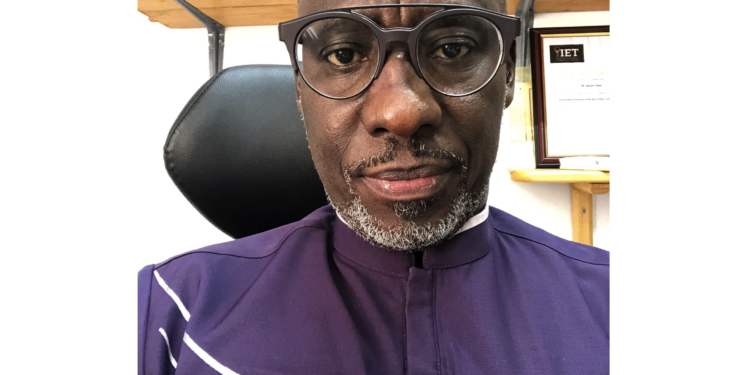By Zainab Jobarteh
“We had managed some of our patients to a good level of health. Unfortunately, the president shortened their lives.”
That was Dr Assan Jaye’s assessment of President Yahya Jammeh’s purported treatment and cure for HIV and Aids as he testified before the Truth, Reconciliation and Reparations Commission in October 2020.
The doctor should know what he is talking about. He is a viral immunologist and most of his 25 years in his chosen field have been dedicated to research in HIV immunology and other viral infections. As head of the HIV treatment programme at The Gambia’s Medical Research Council (MRC), his main focus was understanding the body’s reaction to infection and treating co-infections. His work earned him a position at the peak of his profession, as head of research, training and career development at the MRC.
As the doctor speaks, it is apparent that he is quite at ease with his subject – HIV and its treatment. He recounts the history of HIV, which he says was identified around 1981. Treatment started in The Gambia around 1989/1990, shortly after the first HIV drug came into being in 1987. Over the years, different classes of drugs came on the market and by 2004, HIV had become manageable. “Being declared HIV-positive was no longer a dead sentence,” he said.
At the laboratory in the MRC, Dr Jaye and his fellow scientists had developed a cohort and by 1998 groomed about 1,600 HIV 1 and HIV 2 patients for the study. He explains that the main purpose of the cohort was to take care of the patients and understand the natural course of the disease.
“We also felt we should put them in a database and in the event a treatment was found, we would be able to have an organised cohort to really take care of them in terms of treatment,” he explains.
When the researchers started the treatment, they chose candidates from the cohort depending on the seriousness of their illness.
Asked how effective the treatment was, the doctor states that there was considerable success in about 90 per cent of those who started treatment, adding that not all members of the cohort were on treatment. He explains that a patient had to get into the treatment at a certain stage of their illness. “There was a time to get into treatment.”
Dr Jaye explains that the deaths that occurred were not caused by the treatment, but rather due to inconsistency on the part of the patients. Some left the treatment when they travelled, others did not adhere to the strict instructions that were part of the programme. The patients who failed to make the necessary follow-up, then tried to restart the treatment did not fare well. “But in general, those we followed and monitored always survived,” he says.
Interruptions to the HIV treatment at the MRC started in 2007, when President Yahya Jammeh called a Cabinet meeting and invited members of the diplomatic corps to a press conference to announce to the world that he had found a cure for HIV and Aids.
“You can understand that, when someone says they have a cure and you do not want to take drugs for the rest of your life, most local people would want to go there, especially when this is coming from the president.”
Dr Jaye does not know the exact number of people who joined the Presidential Alternative Treatment Programme (PATP), but some requested to be discharged from the MRC treatment. He says his group realised there might be a problem with the presidential treatment as early as 2008 when patients started quitting and asked to come back to the MRC programme.
The doctor says the patients who went back to the treatment those early days started doing well. Some stayed longer at PATP, but by the time they decided to return, MRC was trying to shut down the programme. “We accepted them back and took care of them, but some of them died because they had stayed too long.”
The presidential programme did not report any deaths. Jammeh and the director of PATP, Dr. Tamsir Mbowe, who was later made minister for Health, kept promoting and supporting the treatment on national TV. They referred to the dead as “absent”. The public was made to believe that some patients had stopped going for treatment when, in fact, they had died as a result of the “cure”.
Dr Jaye explains that the MRC group knew the patients had died because the field workers knew them as they had worked with them before they decamped. They had a close relationship because, apart from treating them, they gave them moral support. They heard their names announced on TV as “absent”, but they knew the truth: that they had died.
The MRC HIV treatment programme was shut down in 2009. According to Dr. Jaye, the doctors did not want to appear to be competing with the president because it would have caused them problems. He moved to Senegal to continue his research work and treatment of HIV patients.
It is not known what effect the closure of the MRC clinic had on the state of HIV infection in The Gambia, but there is no doubt that patients suffered, being left with no alternative but to depend on the dubious traditional treatment and “cure” touted by the president and his people. There was ample evidence that some patients were forced to continue taking Jammeh’s treatment even when it became obvious that it was not working.
Dr Jaye says the country lost a lot because the MRC treatment programme, whose objective was to make sure patients lived a normal and productive life, had unique follow-up procedures. It was the only programme that employed field workers to visit patients and give them the support they needed. He says he believes that was why the treatment programme was successful.







